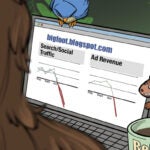TV programmers have long looked down their noses at YouTube. User-generated content isn’t as premium as their prestige programming, or so their argument goes.
YouTube, for its part, has long attempted to pitch itself to advertisers as not only just as good as TV, but, in many cases, more effective.
At its Brandcast presentation on Wednesday, which was part of the upfronts, YouTube trotted out a host of creators with huge and loyal fan bases to make its case.
Kinigra Deon, for example, a YouTube creator who writes, produces and acts in her own short- and long-form films, has nearly 4 million subscribers. Last year alone, the videos on her channel generated 160 million hours of watch time – 70% of which happened on a connected TV, not a phone.
Views on CTV devices have grown more than 130% over the past three years, said Neal Mohan, YouTube’s CEO.
“Viewers watch more than 1 billion hours of YouTube on their TVs every single day – that number still blows me away,” Mohan said. “We are drawing audiences on the big screen because [creators] are the new Hollywood.”
YT vs. TV
The Hollywood reference was a pointed callback.
Mohan kicked off upfronts week with a column in The Hollywood Reporter on Monday contending that it’s time for creators to be eligible to win Emmys.
It’s an interesting premise and a not-so-subtle contention that YouTube creator content should be recognized as the equivalent of other living-room-level TV.
But what people choose to watch on a big screen might surprise you. (It surprised me.)
People are sitting on their sofas watching Shorts, apparently. According to YouTube, views of Shorts on CTV devices more than doubled last year.
And according to data released by Nielsen earlier this week, YouTube is the second-most-watched media distributor overall on TV, with 9.6% of all TV viewing time, behind only Disney at 11.5% and trailed by NBCU (8.9%), Paramount (8.8%) and Warner Bros. Discovery (8.1%).
“The way people watch is changing dramatically,” said Sean Downey, Google’s president of the Americas and global partners.
Redefining TV
As a counterpoint to YouTube’s braggadocio, the Video Advertising Bureau recently released research of its own (unsurprisingly not cited by YouTube during Brandcast), which found that Gen Z viewers are more influenced by TV and streaming content rather than content on TikTok, Instagram or YouTube.
And Gen Z shoppers are 51% more likely to buy clothing similar to what a character, actor or personality from “premium video content” wore versus YouTube content, according to the VAB, which contradicts the prevailing narrative that influencers drive sales.
Guess it all comes right back down to how one defines “premium” and even how one defines “TV.”
YouTube’s hope is advertisers will buy into its vision for “redefining TV,” as Mohan put it, with an emphasis on creators.
As part of its upfronts presentation, YouTube announced the expansion of its YouTube Select program, which allows brands to run against curated content lineups.
Advertisers will now have a takeover option via Select to buy out all the inventory against the top 1% of creator content on YouTube. More than 75% of YouTube Select campaign impressions ran on TV screens in the US during the first half of last year, according to Google.
YouTube also announced an AI-powered ad format for reach campaigns optimized for TV screens. The format repurposes an advertiser’s existing non-skippable ad creative on YouTube so they don’t have to produce new assets.
And, last up, YouTube rolled out branded QR codes for TV that incorporate a brand’s logo to help bolster awareness.
As much as people like to talk about the rise of shoppable TV, there hasn’t been all that much innovation in terms of interactivity beyond QR codes.
But people are scanning, Downey said. The number of people interacting with QR codes on a TV screen has doubled over the past year, he said, although he didn’t share a baseline number.
(Hear me out, though: Whatever happened to the lean-back experience?)
















